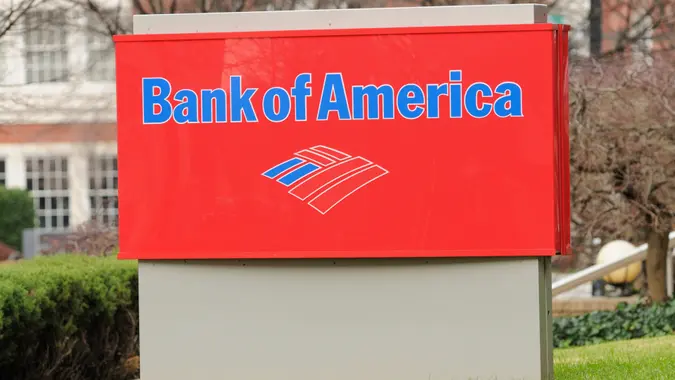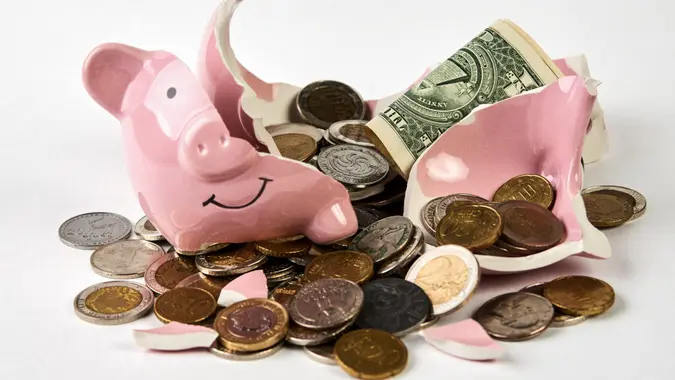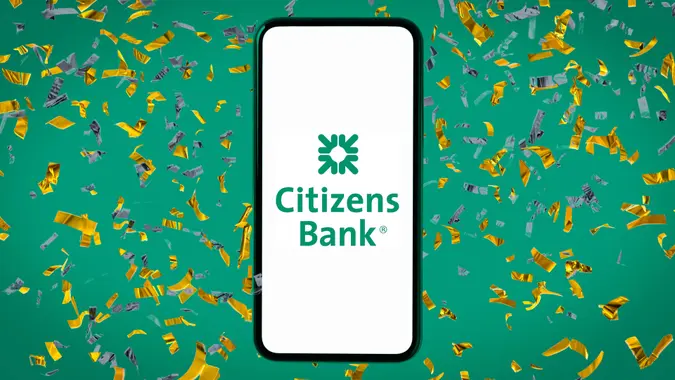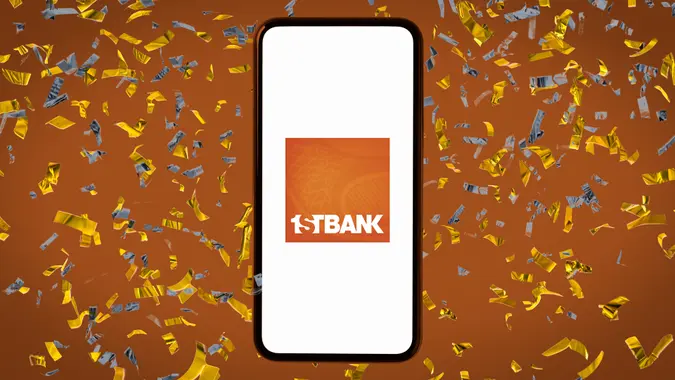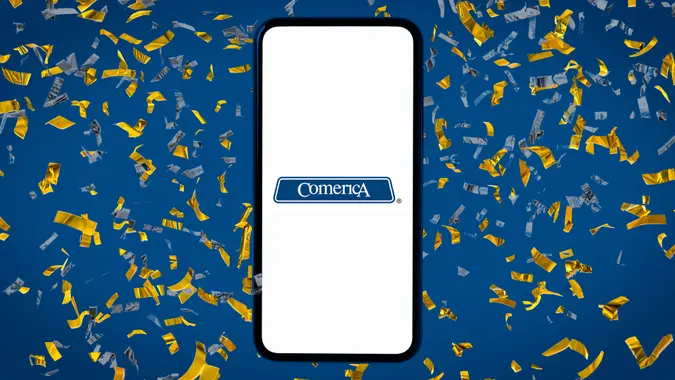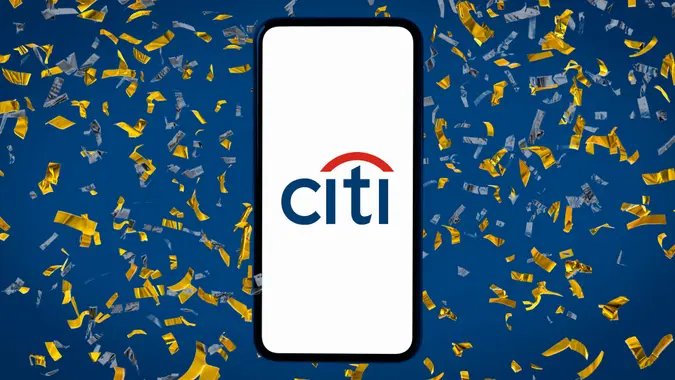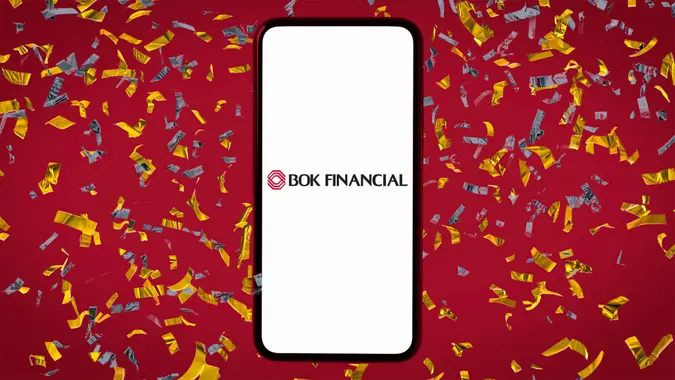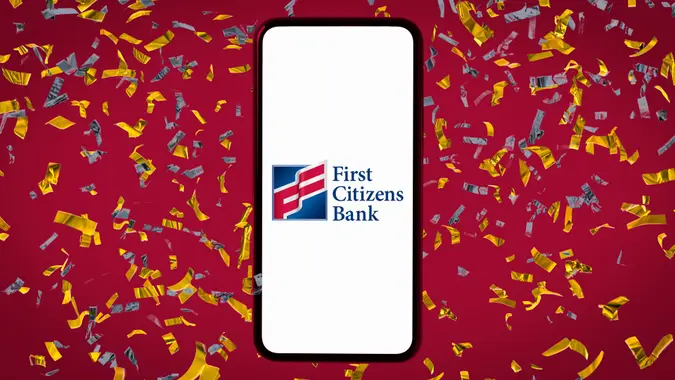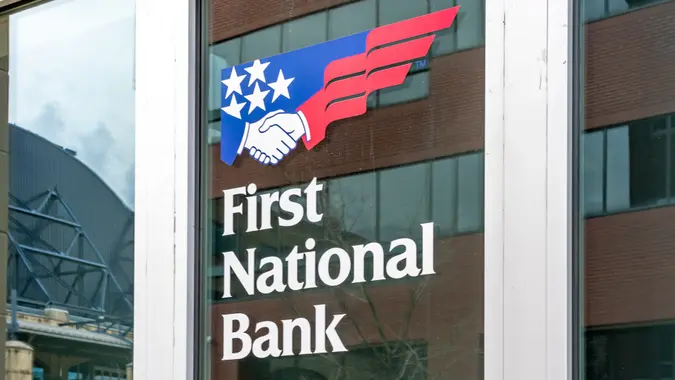What’s Bank of America’s Money Order Fee?

Commitment to Our Readers
GOBankingRates' editorial team is committed to bringing you unbiased reviews and information. We use data-driven methodologies to evaluate financial products and services - our reviews and ratings are not influenced by advertisers. You can read more about our editorial guidelines and our products and services review methodology.

20 Years
Helping You Live Richer

Reviewed
by Experts

Trusted by
Millions of Readers
A money order is a paper document, like a personal check, written for a specific amount and signed by the payer to send money. Unlike a check, however, it’s a guaranteed payment method, meaning it’s considered more secure across the United States.
Many banks and credit unions sell money orders and under certain circumstances, the fee may be waived. Unfortunately, Bank of America, Member FDIC, doesn’t offer money orders whether you’re a customer or not.
Keep reading to learn about payment alternatives the bank offers, how much those cost and other places that offer money orders.
Can I Get a Money Order From Bank of America?
No, Bank of America doesn’t offer money orders.
While Bank of America provides several secure payment options, it doesn’t issue money orders to its customers. However, the bank offers alternatives like cashier’s checks, wire transfers and digital payment options, along with Zelle and wire transfers.
You can visit retailers like the U.S. Postal Service or select banks to buy a money order.
Here are some key takeaways to know:
- The U.S. Postal Service offers money orders. For amounts up to $500, the money order will cost you $2.10, for amounts ranging from $500.01 to $1,000 it will cost you $3.
- You can typically cash your money orders at post offices, banks, participating grocery stores or even big retailers like Walmart.
- Keep in mind that money orders are not the fastest way to send money as they can take one to three business days to mail.
- Bank of America offers other payment options to help you accomplish tasks like paying rent, like Zelle, online bill pay and money transfers.
- Bank of America does not offer money orders. However, if you have a Bank of America checking or savings account, you can get a cashier’s check for $15. If you’re a Preferred Rewards member, the fee can be waived.
Alternative Ways To Get a Money Order
The cheapest place to get a money order will likely be at your bank, depending on the type of account you have. However, banks aren’t always open when you need this form of payment.
Take a look at money order fees at banks and other providers, so you’ll know what to expect:
| Provider | Fee |
|---|---|
| Walmart | $1 maximum fee; rates vary by location |
| U.S. Postal Service | $2.10 (up to $500), $3.00 ($500.01 to $1,000), depending on the money order amount; $0.70 for postal military money orders |
| Chase | $0 to $5 |
| U.S. Bank | $0 to $5 |
| TD Bank | $0 to $5 |
| Wells Fargo | $0 to $5 |
| Citi® | $0 to $5 |
- Where to Cash Money Orders: Post offices, banks, grocery stores, and large retailers like Walmart.
- Processing Time: Typically 1-3 business days, depending on the provider.
Pro Tip: Call ahead to confirm fees and requirements, as policies vary by location.
How To Avoid Money Order Scams and Fraud
Money orders are generally secure, but like any financial product, they can be susceptible to scams. One of the most common scams is a buyer asking a seller to accept a money order for payment that’s for more than what is owed. Then, the buyer asks the seller to deposit the money order into their checking account and give back the difference. The seller might not realize the money order is fake until it’s too late.
Here are some tips to avoid falling victim to a money order scam. Here’s how to protect yourself:
Tips to Avoid Money Order Fraud
- Verify the Money Order: Contact the issuing provider using the listed serial number to confirm authenticity.
- Check for Watermarks: Most valid money orders feature security watermarks or unique identifiers.
- Avoid Overpayment Scams: Be cautious if someone insists on overpaying with a money order and asking for cash back.
- Take Your Time: Don’t rush to deposit or refund a money order until it’s cleared by your bank.
- Trust Your Instincts: If a transaction feels off, consult with the issuer or your bank before accepting payment.
Remember: If a money order turns out to be fake, you could be responsible for repaying the bank the full amount.
More About Bank of America
- Bank of America Review
- Bank of America CD Rates
- Bank of America Savings Account Interest Rates
- Bank of America Hours
- Bank of America ATM Limits
Final Take To GO
While Bank of America money orders aren’t available, plenty of secure payment alternatives are available. If you need a paper form of payment, opt for a cashier’s check. For fast and digital transactions, services like Zelle or online bill pay offer convenient solutions.
For those committed to using a money order, providers like the U.S. Postal Service, Walmart, and local banks are reliable options.
Key Takeaway: Evaluate the fees and requirements of each option to choose the best method for your specific transaction.
FAQs About Bank of America Money Orders
Here are the answers to some of the most frequently asked questions regarding Bank of America money orders:- How much is a money order at Bank of America?
- Bank of America does not offer money orders. However, they provide cashier’s checks for $15, with possible fee waivers for Preferred Rewards members.
- Can I get a money order at Bank of America?
- No, but alternatives include cashier’s checks, wire transfers and digital payment options like Zelle.
- What is the best alternative to a money order at Bank of America?
- A cashier’s check is the closest alternative, providing a secure, guaranteed payment method.
- Where else can I get a money order?
- Money orders are available at the U.S. Postal Service, Walmart and most banks like Chase, TD Bank and Wells Fargo.
- How can I avoid scams when using money orders?
- Verify authenticity, check for watermarks and avoid overpayment scams. Take time to confirm transactions before issuing refunds or spending the funds.
Caitlyn Moorhead contributed to the reporting for this article.
Data is accurate as of March 12, 2025, and is subject to change.
Editorial Note: This content is not provided by any entity covered in this article. Any opinions, analyses, reviews, ratings or recommendations expressed in this article are those of the author alone and have not been reviewed, approved or otherwise endorsed by any entity named in this article.
Editorial Note: This content is not provided by any entity covered in this article. Any opinions, analyses, reviews, ratings or recommendations expressed in this article are those of the author alone and have not been reviewed, approved or otherwise endorsed by any entity named in this article.
Our in-house research team and on-site financial experts work together to create content that’s accurate, impartial, and up to date. We fact-check every single statistic, quote and fact using trusted primary resources to make sure the information we provide is correct. You can learn more about GOBankingRates’ processes and standards in our editorial policy.
- Bank of America "website"
- FCC "Wire Transfer"
- USPS "Sending Money Orders"
- USPS "Protect Against Money Order Fraud"
- Walmart "Money Orders"
 Written by
Written by  Edited by
Edited by 





